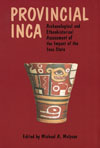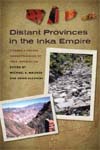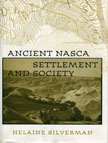Provincial Inca
"Malpass and his colleagues have succeeded in pulling together widely scattered data concerning what the Inca empire was really like outside of its imperial heartland. A welcome contribution to the archaeology of empire and to Latin American studies."—Karen Olsen Bruhns
The Inca empire of Tawantinsuyu spanned almost 2,000 miles of enormous environmental variety, from coastal deserts to high-altitude grasslands. In less than a century, without wheeled vehicles or animals that could be ridden, the Incas conquered cultures that differed as tremendously as their environments. From agriculture-based politics with an elaborate material foundation like the Chimu of the north coast of Peru to marginal communities of fisherfolk like the Uru of the Lake Titicaca region, all were incorporated into a strongly hierarchical system as the empire spread during the Late Horizon, from A.D. 1438 to 1532.
The essays in this distinctive, multifaceted volume combine the two principal sources of information on the Incas and the peoples they conquered—ethnohistorical accounts and archaeological research—to produce a single vision of a flexible, heterogeneous empire. The essayists' analytical focus evaluates the means by which we understand the Inca empire and its relationships with its conquered peoples; their empirical focus provides specific archaeological ways of identifying the Inca presence in provincial areas. Important contributions include the presentation of new data on Inca administrative policies and the merging of ethnic groups into the empire and the documentation of the many ways used to differentiate Inca from non-Inca material remains.
Encompassing a wide range of environmental conditions and many kinds of provinces, Provincial Inca tests archaeological data against ethnohistorical descriptions to illuminate the variability in Inca state policies with regard to the incorporation of different provinces. It should be read by anyone interested in Andean archaeology, ethnohistory, culture, ethnicity, and the formation of state.
Chapter 1
Provincial Inca Archaeology and Ethnohistory:
An Introduction
Michael A. Malpass
I. Studies in Provincial Inca Archaeology
Chapter 2
A Summary of the Inca Occupation of Huamachuco
John R. Topic and Theresa Lange Topic
Chapter 3
…And He Said in the Time of the Ynga,
They Paid Tribute and Served the Ynga
Sue Grosboll
Chapter 4
The Inca Occupation of the Province of
Andamarca Lucanas, Peru
Katharina J. Schreiber
Chapter 5
The Identification of Inca Posts and Roads
from Catarpe to Rio Frio, Chile
Thomas F. Lynch
II. Toward an Archaeological and Ethnohistorical Synthesis
Chapter 6
The Provinces in the Heartland: Stylistic Variation
and Architectural Innovation near Inca Cuzco
Susan A. Niles
Chapter 7
Finding a Fit: Archaeology and Ethnohistory
of the Incas
Catherine J. Julien
Chapter 8
Variability in the Inca State: Embracing a
Wider Perspective
Michael A. Malpass






